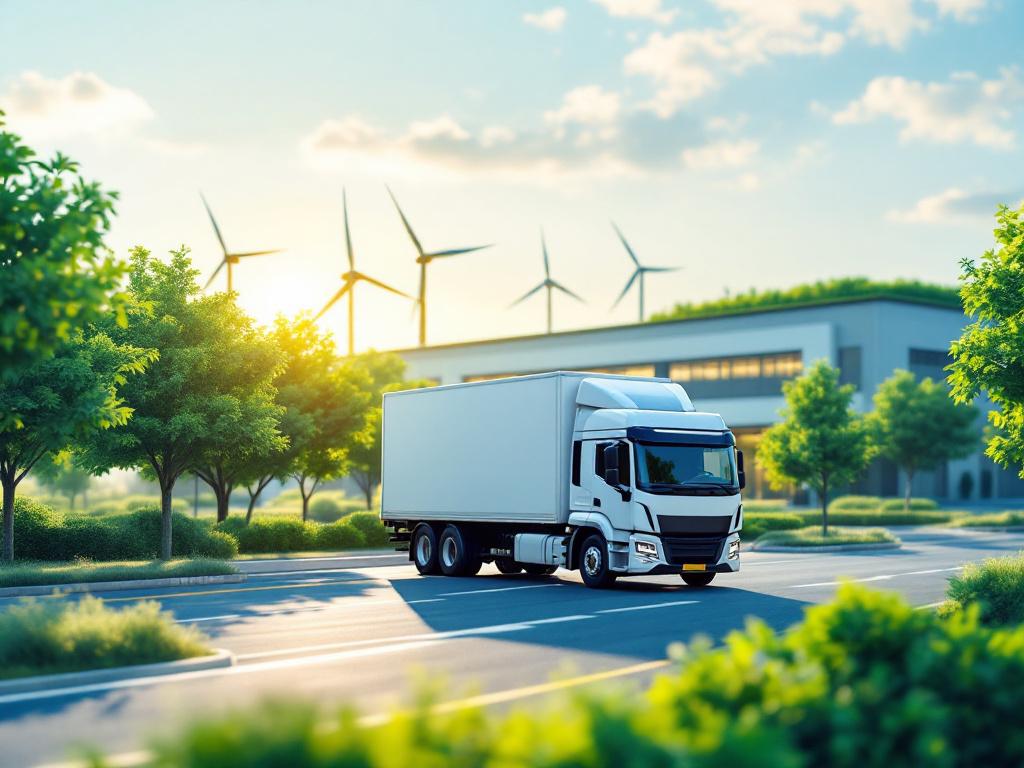As the logistics industry evolves, several warehouse and distribution companies are stepping into the spotlight. The year 2025 promises a plethora of innovations and shifts in the market, driven by technological advancements and changing consumer expectations. This article delves into the top seven companies poised to make significant impacts in the warehouse and distribution landscape.
The Importance of Warehouse and Distribution Services
Warehouse and distribution services are the backbone of an efficient supply chain, playing a pivotal role in meeting consumer demands and managing inventory. With the logistics industry projected to grow to $12 trillion by 2025, the importance of effective warehousing cannot be overstated. These services enable companies to optimize inventory management, improving storage capacity and ensuring timely delivery. Recent trends highlight the integration of automation and artificial intelligence to enhance operational efficiency, reducing errors and labor costs.
Statistics reveal that demand for third-party logistics (3PL) providers is surging, with the global 3PL market expected to expand at a CAGR of 7.5%. This shift indicates a preference for outsourcing logistics functions to specialized firms that utilize advanced technologies for real-time tracking and data analytics. As supply chains become more complex, the ability to adapt and efficiently manage warehousing and distribution will set leaders apart in the competitive landscape.
Criteria for Selecting Top Companies
When evaluating the top warehouse and distribution companies for 2025, specific metrics serve as the foundation for ranking their effectiveness. **Technological innovation** stands as a primary criterion; companies leveraging advanced technologies can streamline operations and improve accuracy. Next, **customer service** plays a critical role—the best companies prioritize client relationships, ensuring timely delivery and responsiveness to needs.
**Scalability** is another vital metric, reflecting a company’s ability to expand operations efficiently in response to market demands. A scalable model prevents bottlenecks during peak seasons and improves overall resilience. Furthermore, the **ability to adapt to market changes** is crucial; companies that invest in versatile solutions can pivot in response to global trends, such as shifting consumer preferences or regulatory shifts.
These factors collectively contribute to a company’s logistic effectiveness, ensuring not only operational efficiency but also long-term sustainability in an increasingly competitive landscape.
Innovative Technologies Reshaping Logistics
Innovative technologies are fundamentally reshaping warehouse operations, enhancing capabilities and boosting efficiency. Automation, a leading trend, allows companies like Amazon and Walmart to deploy robots for sorting, packing, and inventory management, thereby accelerating fulfillment processes. Real-time inventory tracking relies on RFID and IoT devices to provide accuracy and visibility, enabling firms such as Alibaba to drastically reduce stock discrepancies and streamline supply chains.
AI-driven solutions play a pivotal role, as seen with tech-driven startups like GreyOrange offering predictive analytics for space optimization and demand forecasting. These innovations lower operational costs and improve accuracy, reducing the likelihood of stockouts and overstock scenarios. For instance, the implementation of smart algorithms has helped Zappos enhance order accuracy rates by over 20%. As leading companies continue to integrate these technologies, the logistics sector is poised for unprecedented transformation, emphasizing not just operational efficiency but a more agile response to market demands.
Sustainability in Warehouse Operations
The growing importance of sustainability in the warehouse and distribution sector is reshaping industry standards and consumer expectations. Companies are increasingly adopting eco-friendly practices, recognizing that sustainability is not just a trend, but a long-term commitment to corporate responsibility. For instance, firms like Amazon and Walmart have invested in energy-efficient systems, utilizing renewable energy for their operations, which significantly reduces their carbon footprint.
Moreover, innovative waste reduction strategies are becoming commonplace, with companies implementing recycling programs and optimizing space to minimize waste. Studies show that sustainability efforts can positively influence consumer perception, enhancing brand loyalty and driving profitability. Consumers today prefer brands committed to environmental stewardship, often willing to pay a premium for sustainable practices. This shift towards greener operations not only bolsters a company’s image but can also lead to operational efficiencies, positioning these organizations as leaders in the evolving logistics landscape as they prepare for 2025 and beyond.
Challenges Facing the Warehouse Sector
The warehouse and distribution sector is currently facing a myriad of challenges that threaten operational efficiency and profitability. Supply chain disruptions, particularly due to geopolitical tensions and climate-related events, have become increasingly frequent. Many companies grapple with unpredictable shipment delays and fluctuating inventory levels, forcing them to rethink their logistics strategies.
Labor shortages are another pressing issue, as the demand for skilled labor outpaces supply. Companies are investing in automation and robotics to mitigate these gaps, allowing them to maintain productivity even with fewer employees. Additionally, rising operational costs, driven by inflation and fuel prices, are pushing businesses to explore cost-effective solutions, such as negotiating better freight rates or consolidating shipments.
To overcome these hurdles, leading companies are implementing robust risk management frameworks and fostering strong relationships with suppliers to ensure more seamless operations. This resilience empowers organizations to adapt and thrive, even amidst a challenging climate.
The Future of Warehousing and Distribution
As we approach 2025, the landscape of warehousing and distribution is set to transform dramatically. Consumer demand is shifting towards faster, more flexible delivery options, pushing companies to optimize their logistics networks. The increasing popularity of e-commerce necessitates innovations in storage solutions, with more facilities located closer to urban areas to enable rapid fulfillment.
Advancements in technology, particularly automation and robotics, will redefine operational efficiency. Automated guided vehicles (AGVs) and drones are expected to enhance the speed of sorting and packing processes. Moreover, the integration of Internet of Things (IoT) devices will enable real-time monitoring of inventory and conditions within warehouses, leading to better decision-making.
Data analytics will play a pivotal role in shaping operational strategies, as companies leverage big data to forecast trends and optimize supply chains. Companies such as Amazon, Prologis, XPO Logistics, and DB Schenker are well-positioned to lead the charge, utilizing their robust technological frameworks and adaptive strategies to meet the evolving demands of the industry.
Conclusions
In summary, the landscape for warehouse and distribution companies is rapidly evolving, shaped by technology, sustainability, and shifting market demands. The companies highlighted in this article are set to lead the charge as they adapt to these changes. As 2025 approaches, staying informed about these industry leaders is essential for understanding future logistics trends.


